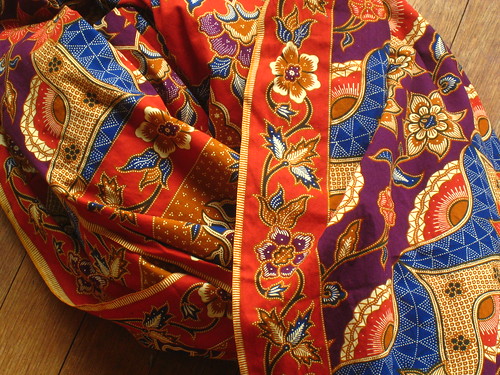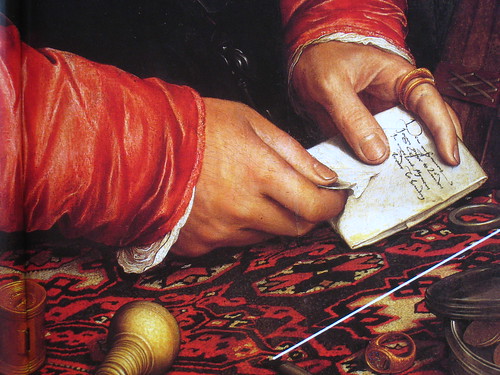
Piece of cloth

Hans Holbein the younger, Georg Gisze, 1532
In Secret Knowledge, David Hockney argues compellingly that artists discovered how to project three dimensional images directly onto a horizontal surface and that this is the basis for the extraordinary realism seen in the work of such artists as Holbein, Vermeer, Velasquez, Caravaggio, van Eyck and many others. (He also argues that it was this capacity to project images which led to the invention of perspective in Western art.)
One of his examples is this painting by Holbein, where it can be seen (in the full painting) that the plane of the table makes several alarming changes. This, he argues, is the effect of having to fit together smaller projections to make a whole. And certainly, while all the various parts of the cloth follow the notion of perspective, there is no overall perspective driving its patterns.
In this painting, Holbein is showing off by recreating the beautiful patterns of the textile on the table, as do other artists in showing off their capacity to recreate with light and shade, the wonderful complex patterns of silk brocades as they fall in folds about the body of the wearer. (And that is what inspired the first photograph)
The arguments are compelling because the distortions in various paintings (of anatomy, & of things which should be flat) are able to be isolated to whole parts of the painting (rather than things within the painting). This painting of Holbein's is an extraordinary exemplar.

No comments:
Post a Comment